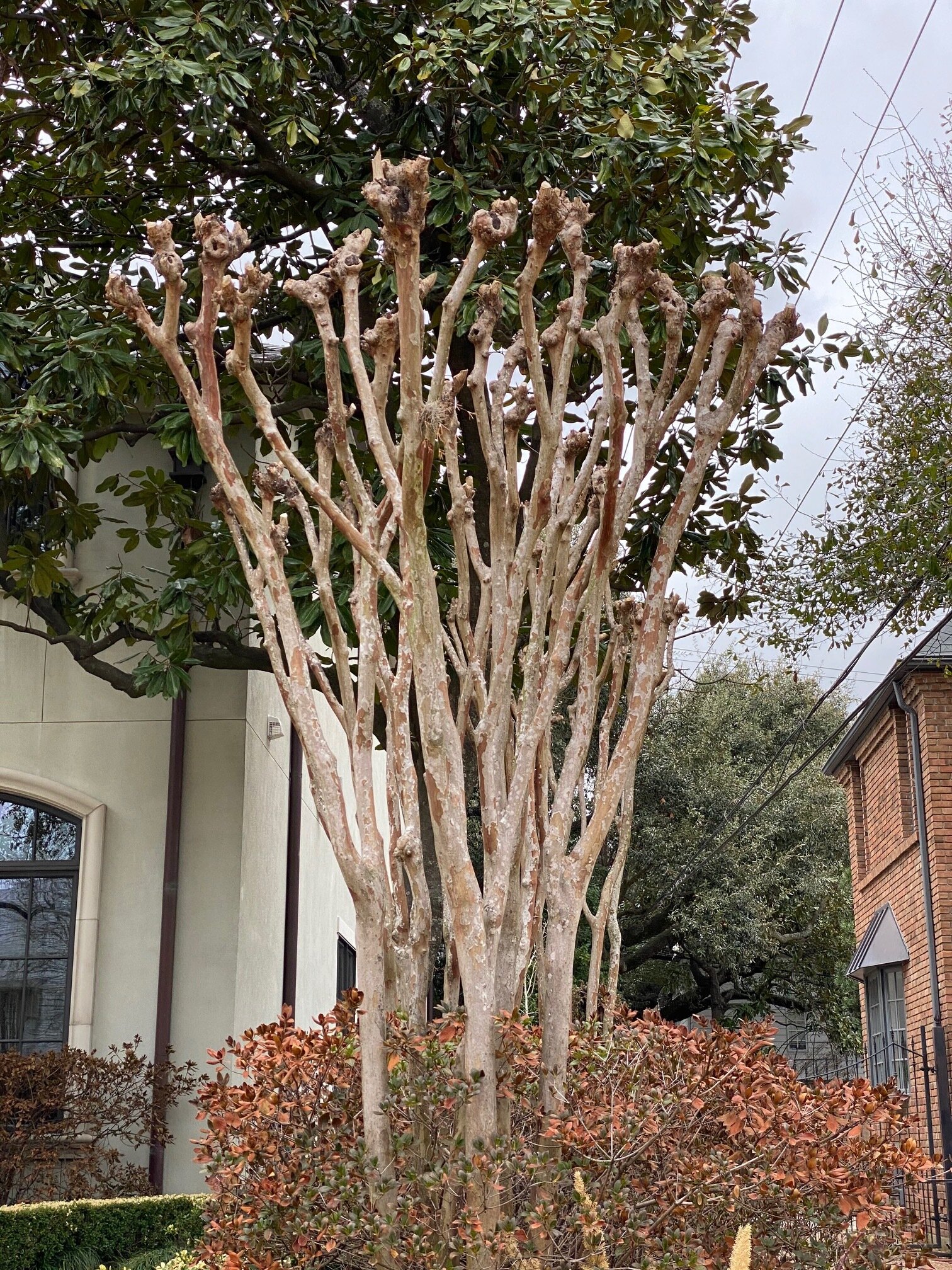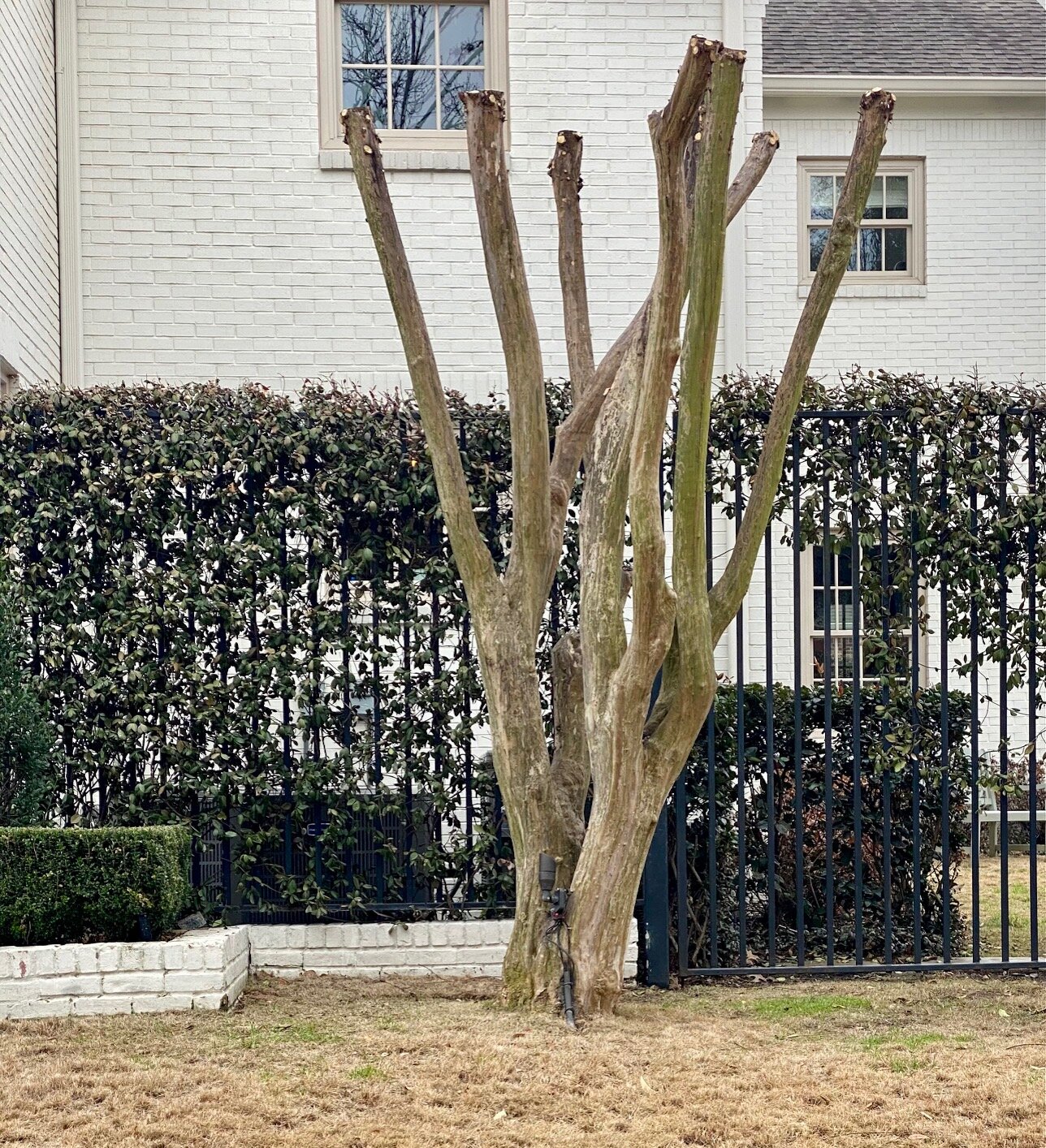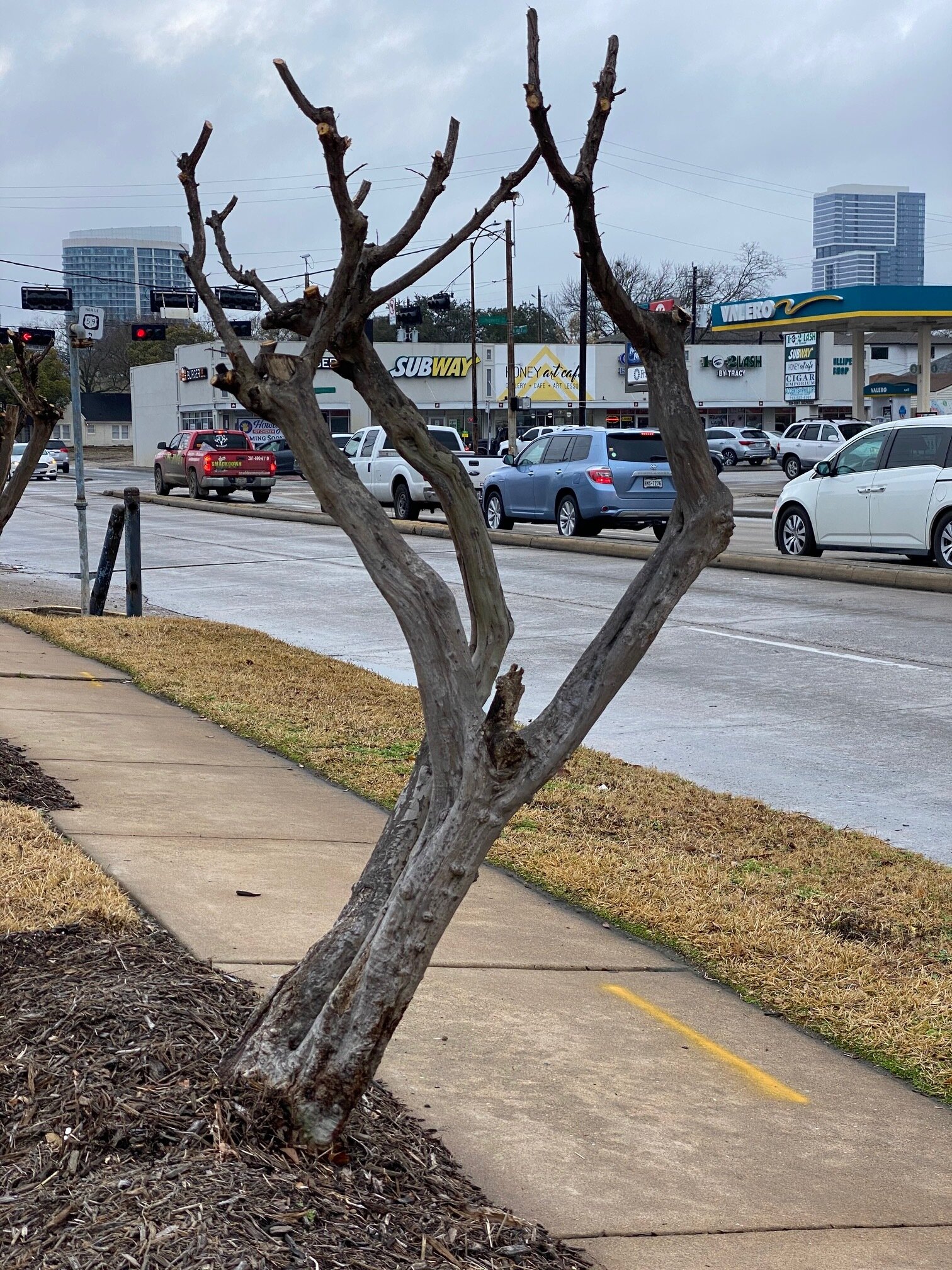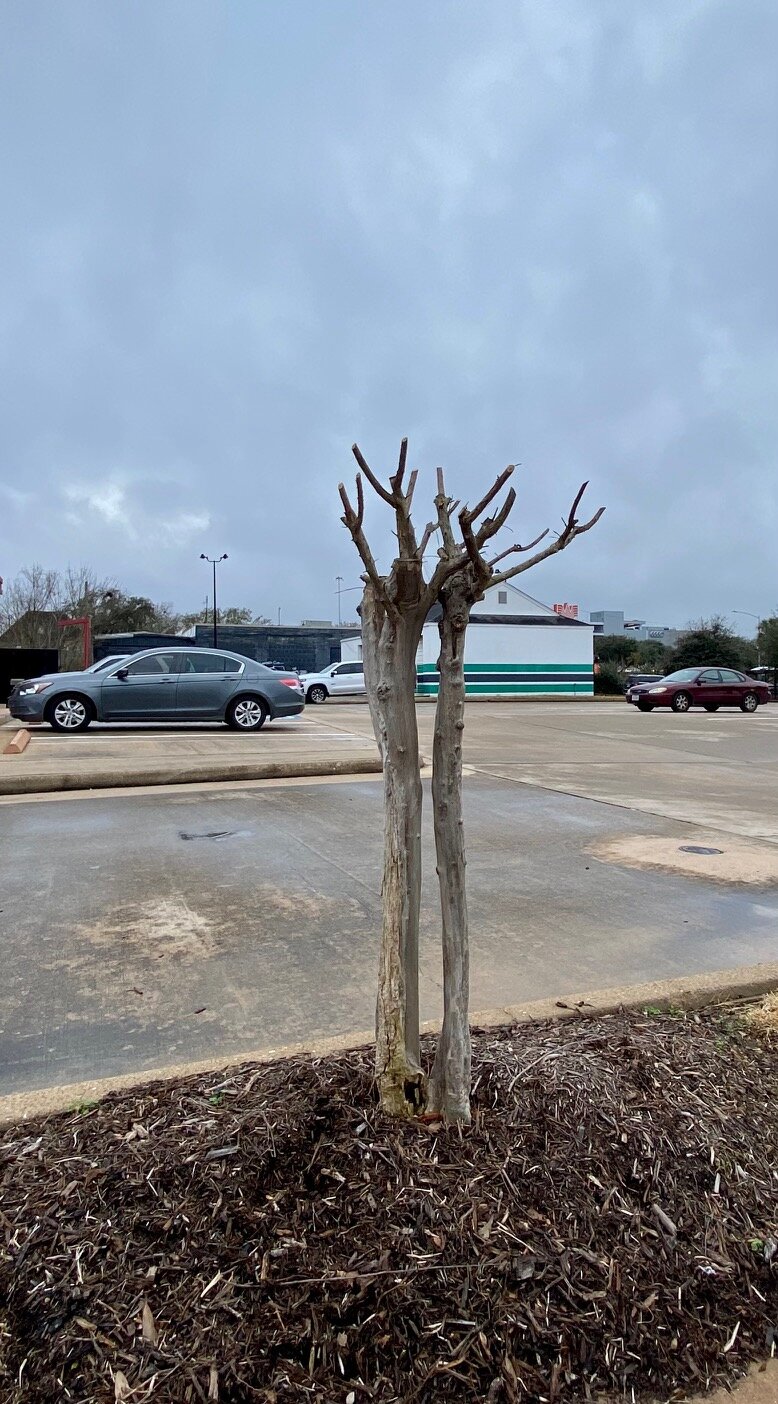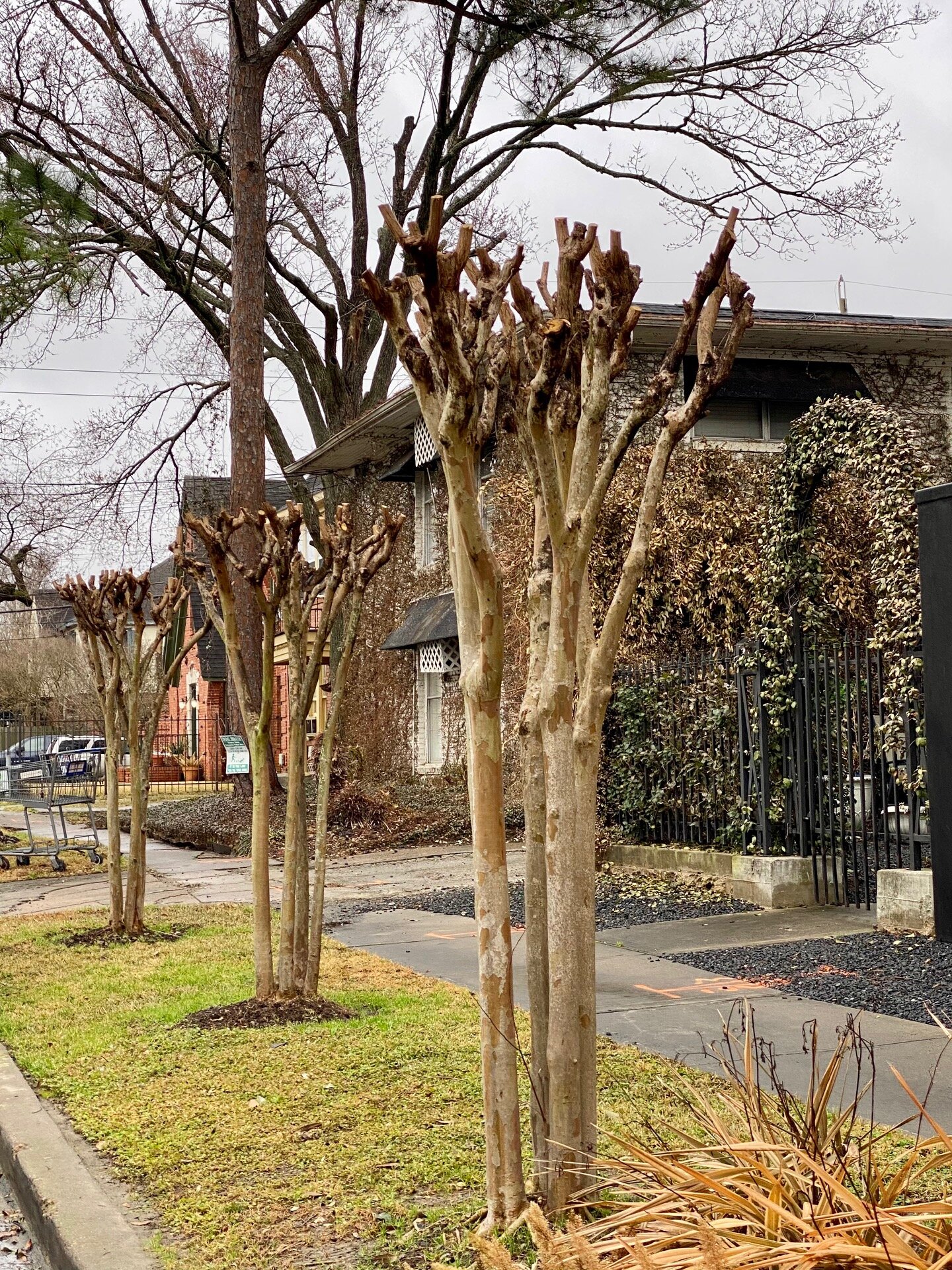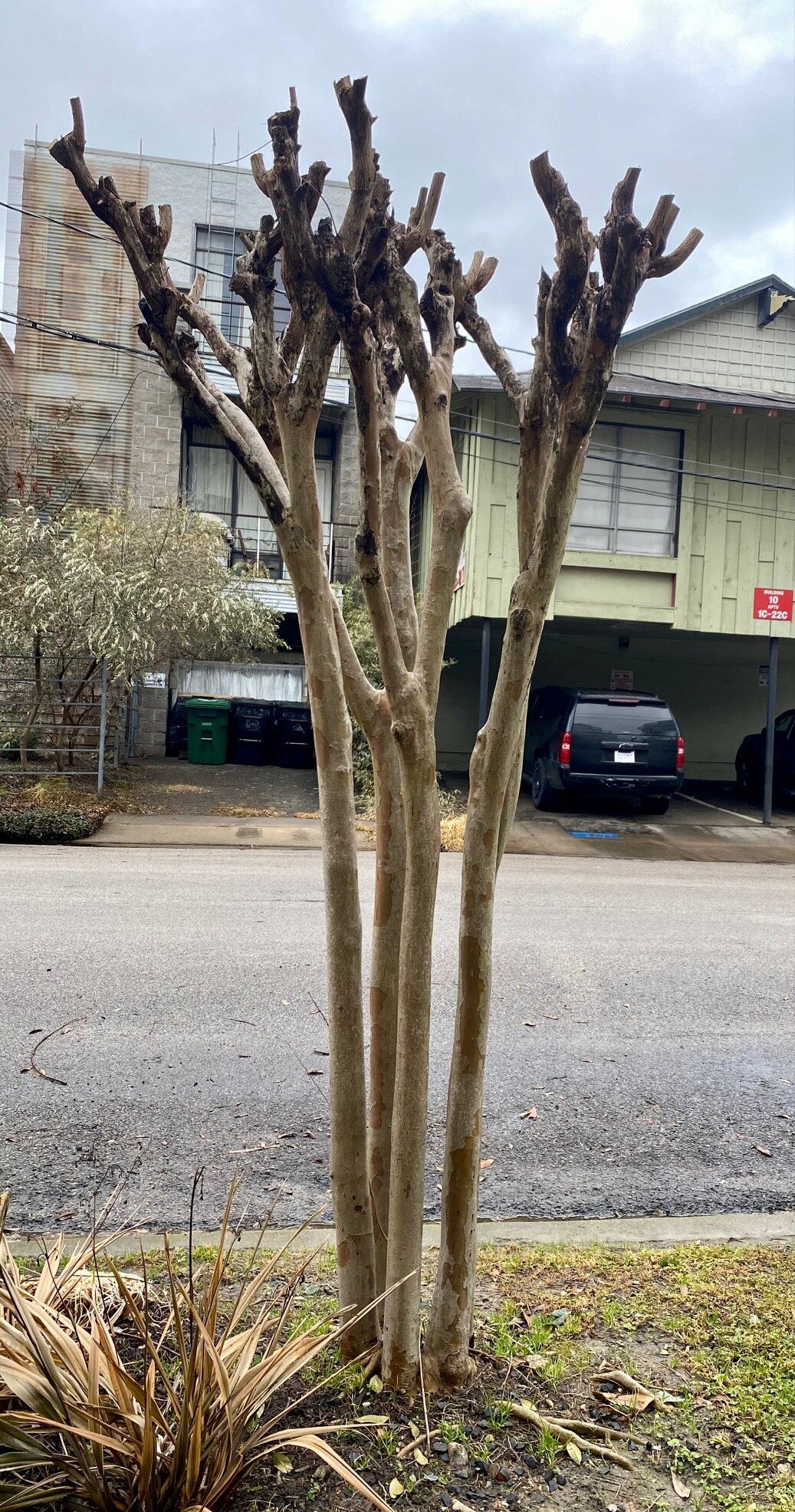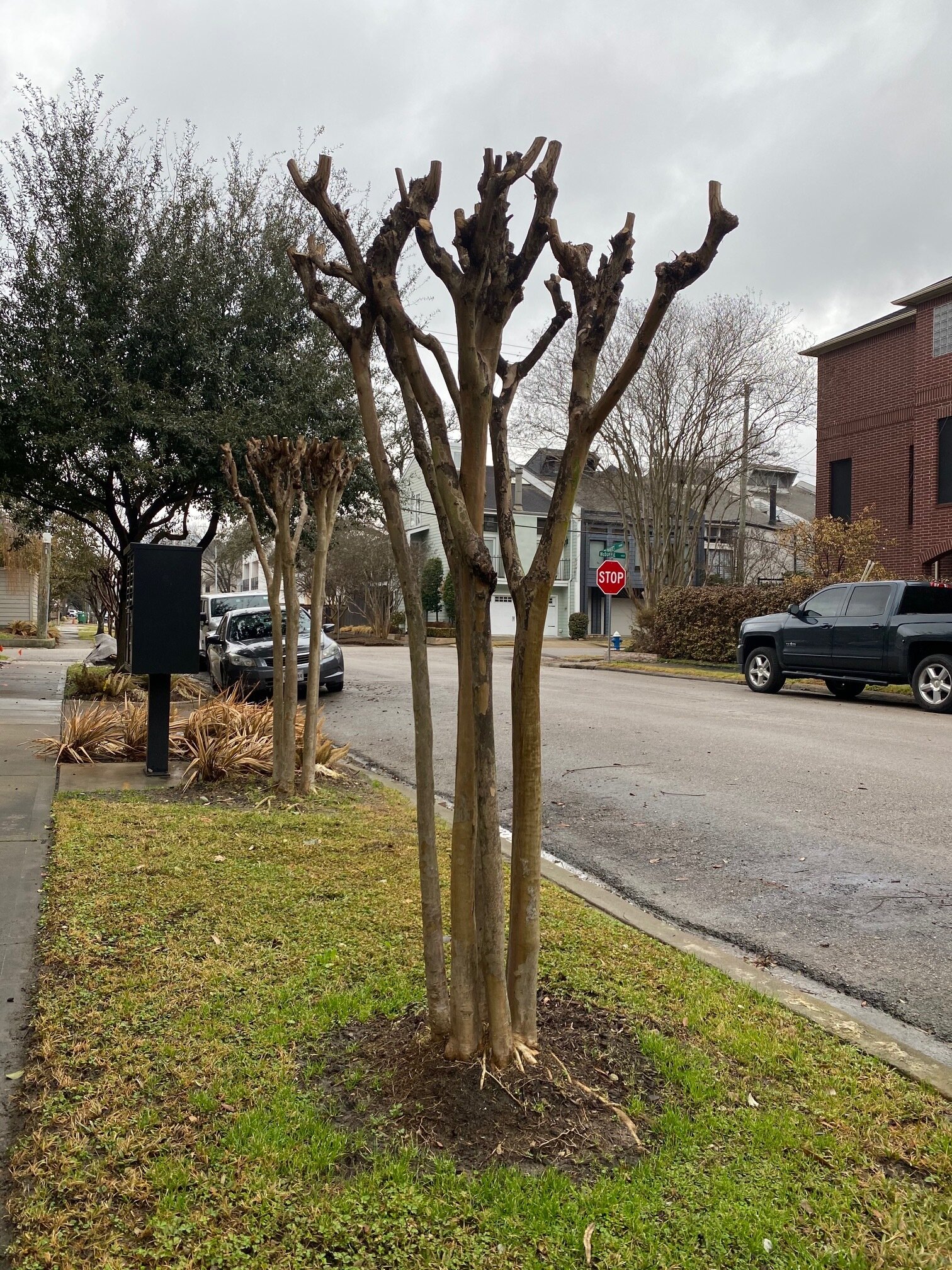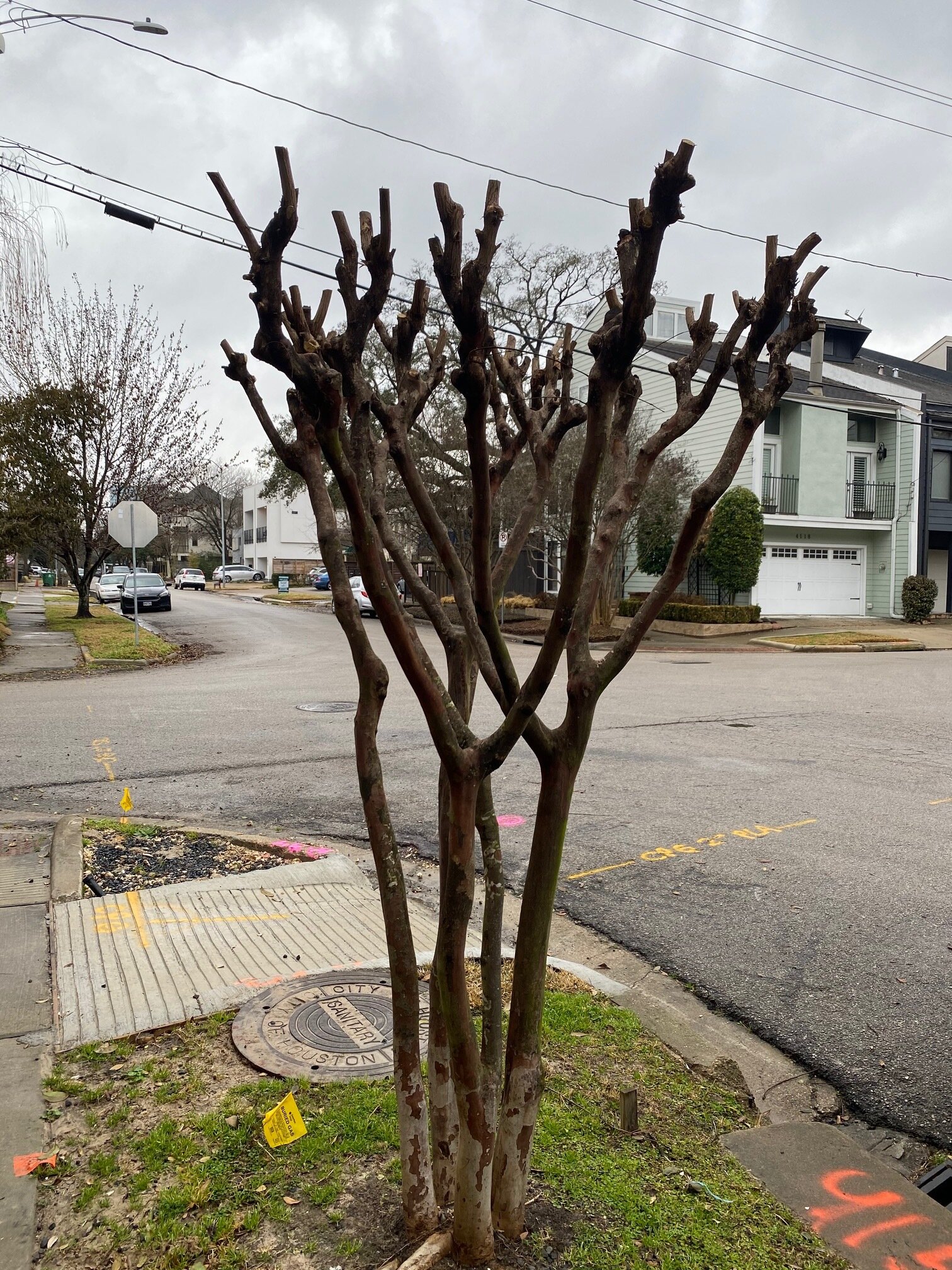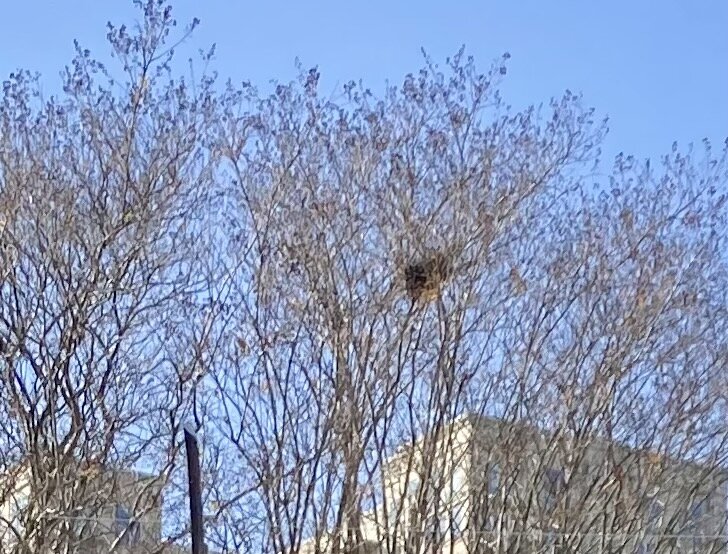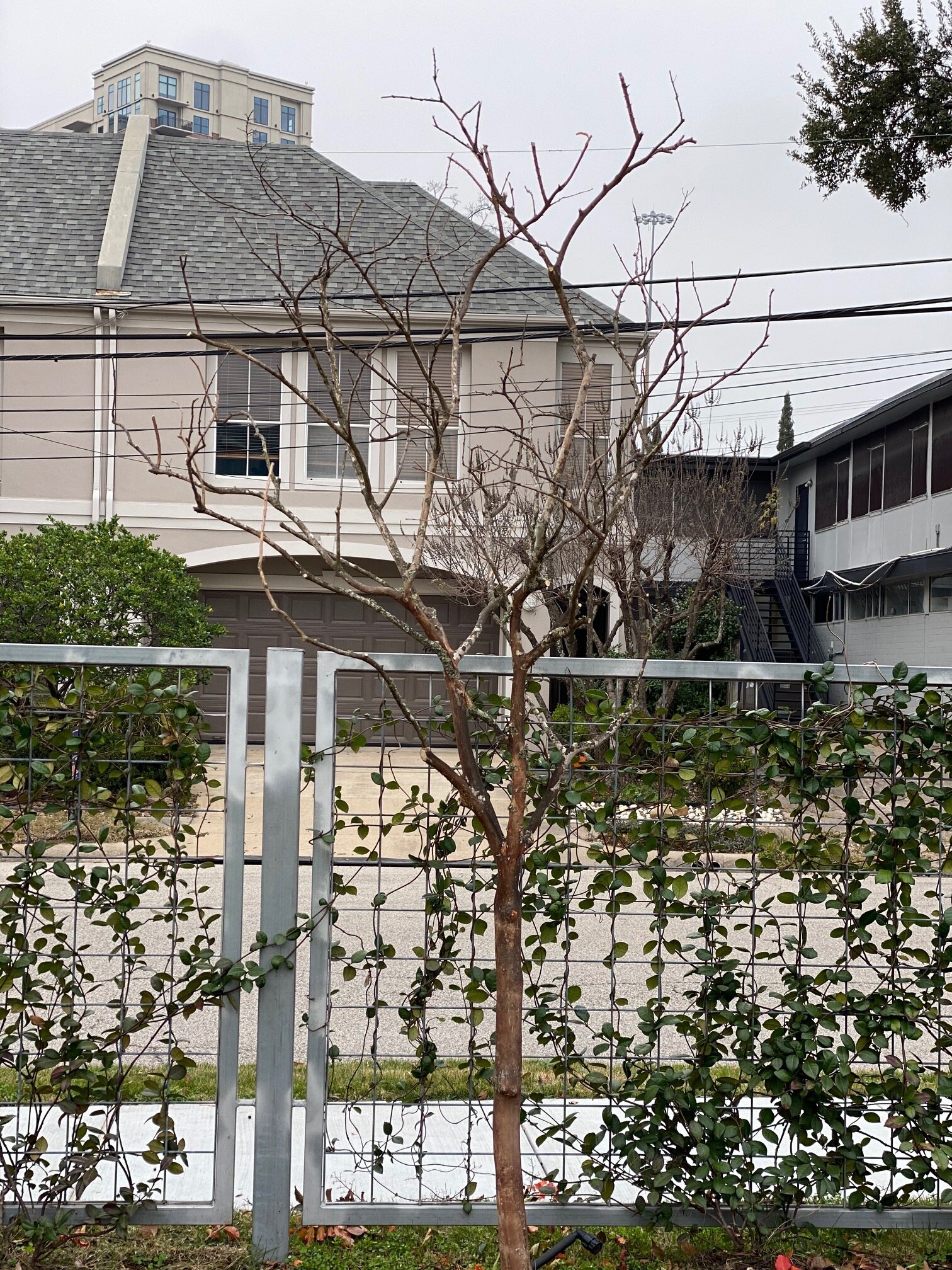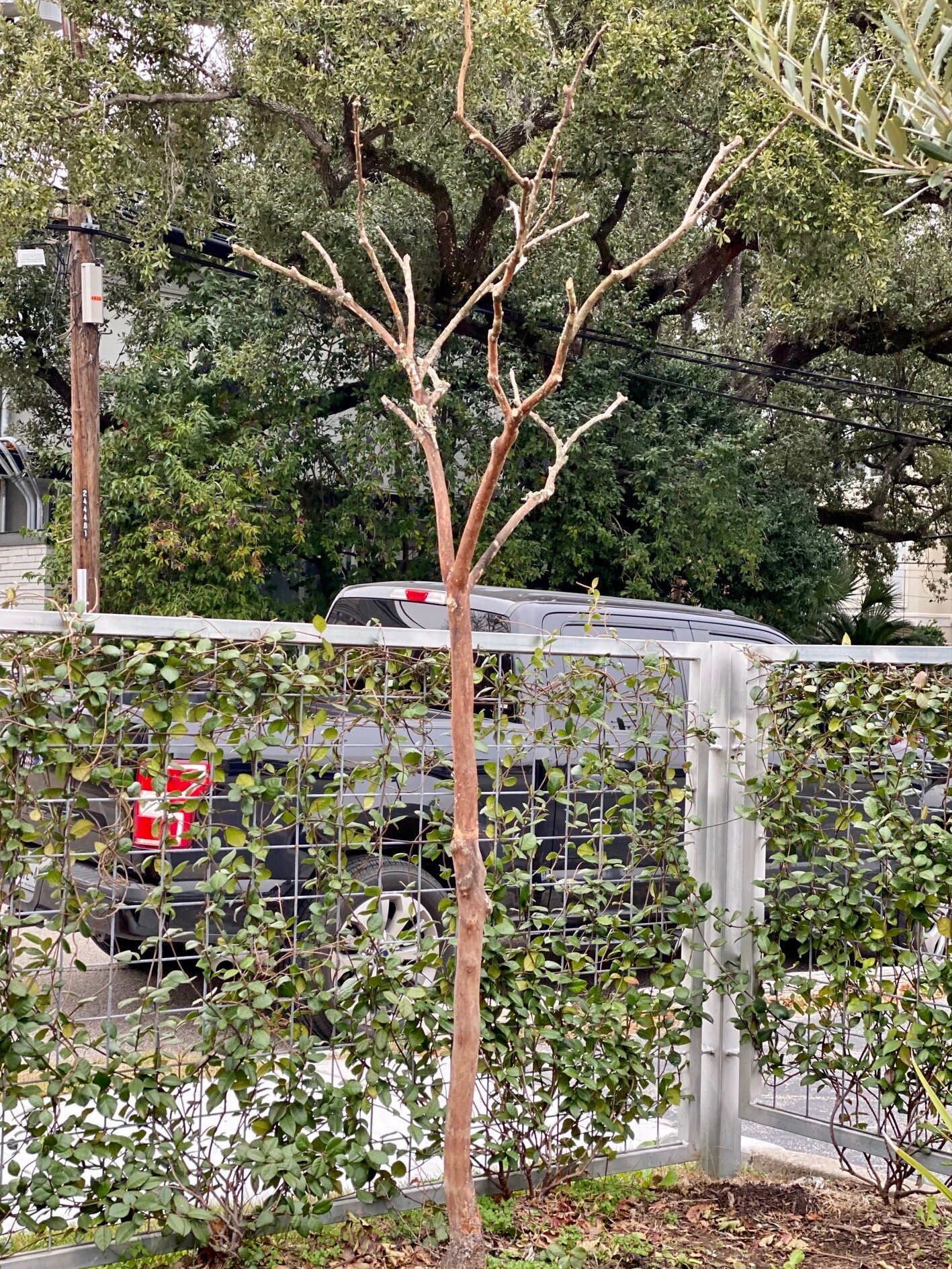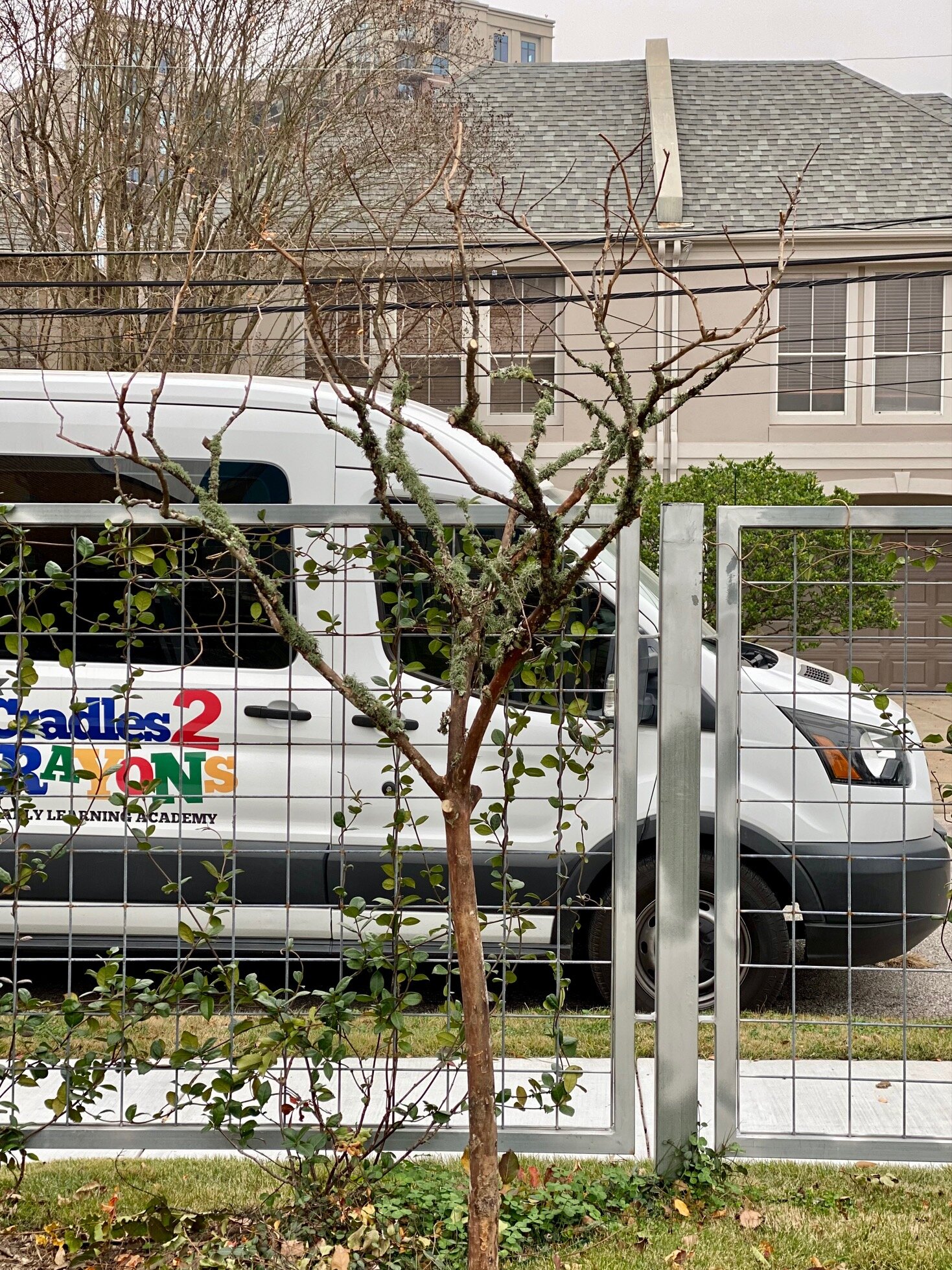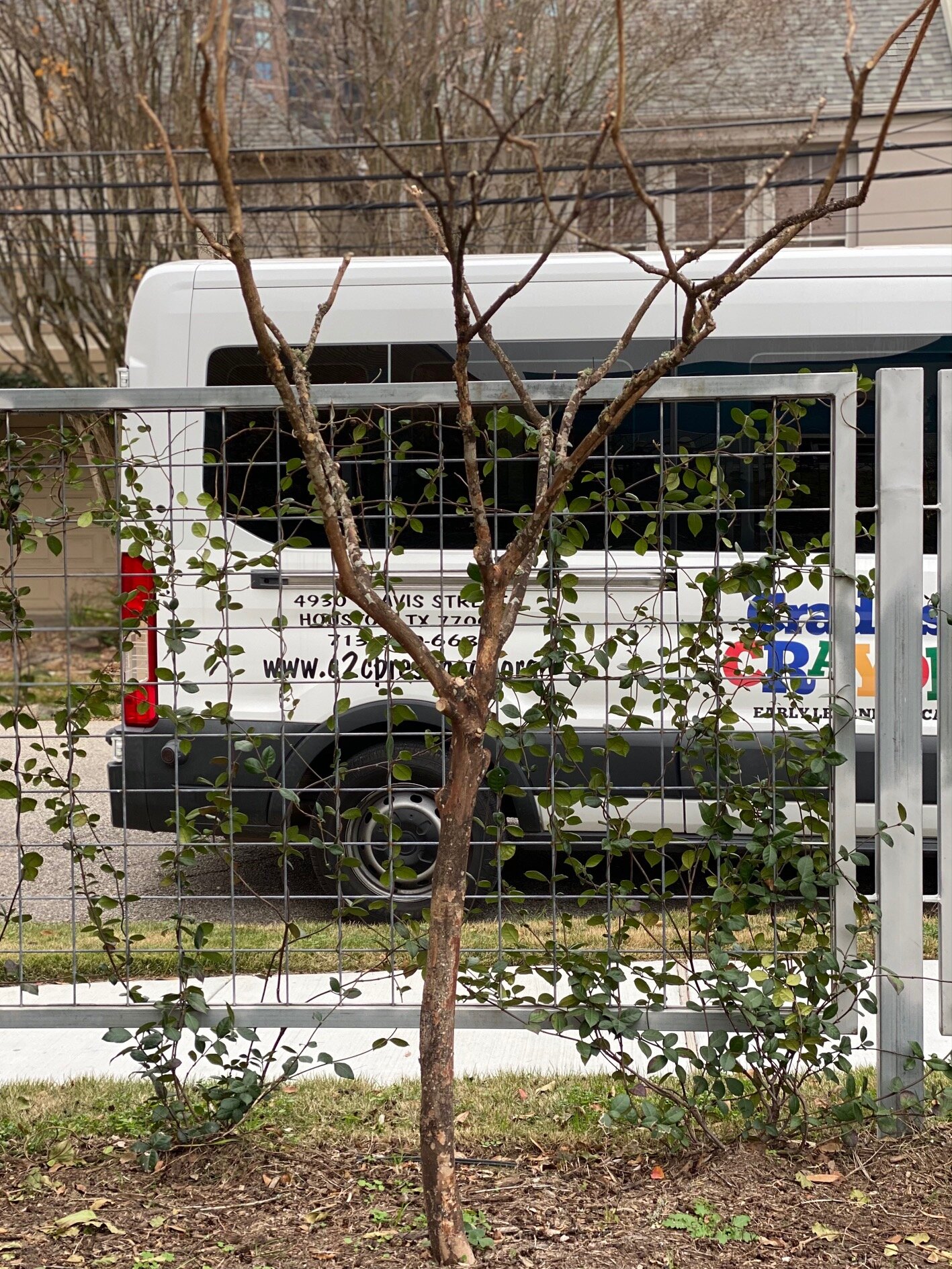—The last thing you see when you leave the Museum. It is worthy of bookend status to a visit to the Museum; a water feature is a holistic system study. Without a water feature, an urban garden can not be chemical-free. It is a critical component for all walks or flights of urban life. The trailer a hole, whole, and holistic is immersion art.
Read moreThe Gift of Crepe Myrtles part 1 — Ready-Mades, Assemblage
Found object — Lagerstromia indica
Size varies 70"– 93" X 49' X 4'
Two of the five Crepe Myrtles on the northwest corner, before I started sculpting Symbiosis, — summer of 2020.
The first thing I did was release the stakes supporting the trees. Just like humans trees become strong from movement, thickening their trunks and stimulating root growth.
The Crepe Myrtles were generously donated to the garden before I started sculpting Symbiosis. Donations are the lifeblood of Lawndale — it is crucial I not clip off that support. Planted in a row on the Travis street side, the treasured trees are the west border of the space next to the fence; they are a significant element of the work, objets trouvés, ready-mades. They anchor, frame and end the assemblage. They are stage left from the parking lot. Many of their characteristics will change every year; they are moving targets, living found objects. I will use them to create the above-ground kinetic components of the sculpture.
detail of the found objects
They are stage left from the parking lot. summer of 2020
There is a symmetry in Symbiosis that balances the needs of the Lawndale Art Center's artists, exhibitions, neighbors, urban wildlife, and the soundscape of urban sculpture gardens. As I prune the Crepe Myrtles, I have to weigh the impact of these elements with every extraction; most features are not physically part of the garden but are part of the whole. Like all sculptures, they have components you can't see; the armature supports everything and the welds that give strength.
The Crepe Myrtles are planted in a row on Travis Street, at the far west end of the garden.
This work requires considerable online research and quiet observations: listening, seeing, and questioning; I continue to learn and observe what wildlife these Lawndale treasures will benefit, symbiotically balancing the needs of the living organism in the heart of the arts district on the Coastal Prairie. What would the arts be without the influence of the natural world?
I took this image through the Crepe Myrtles at the Fall 2020 opening. There was plenty of room for social distancing. It was the first COVID event for Lawndale and for me.
Crepe Myrtles, part 2 — The pruning and trimming is actually the creation of a living sculpture and what that effects are.
Lagerstromia indica —The ways of sculpting symbiotic relationships.
In January of 2021, I shaped the Crepe Myrtles. The living organisms impacted by this creative work are an assemblage of considerations. In holistically sculpting a regenerative site-specific sculpture of living organisms, I have to balance the hierarchy of the living creatures; with every cut, I ask how it will impact the whole?
Golden-eye Lichens - Teloschistes chrysophthalmus- Native to the United Kingdom these lichens survive in harsh environments where algae cannot normally survive. Lichens enable algae to live all over the world. They also provide a means to convert carbon dioxide in the atmosphere into oxygen. I found two small patches on one of the Lawndale Crepe Myrtle’s. I took this before the Texas freeze. It survived but is now struggling. Lichens only grow on Crepe Myrtle’s that are struggling, but they do not harm the Crepe Myrtle’s. I am hunting for more information about the relationship between the lichens and the Crepe Myrtle’s.
Cutting-clipping-chopping, I work to balance and enhance four features; make them aesthetically attractive, shape the Crepe Myrtle branches to benefit the birds, the neighboring community, pollinators and other metropolitan creatures underserved an unknown. I researched how landscapers recommend you prune Crepe Myrtles. I did not want to Crepe Murder them.
Extraction
LOCAL CRIME SCENES
EVIDENCE OF THE COPYCAT MURDERS PLAGUING HOUSTON’S WILDLIFE HABITATS.
I also questioned past practices developed without considering the impact on nature. Landscapers recommend cutting away all horizontal branches for human visual pleasure. That gave me pause—without any horizontal elements, how do birds and squirrels support their nests? I started looking around at birds' nests, something I do all of the time anyway. I observe birds building their nest in protected areas of trees where many cross branches stabilize their nests and protect from wind, sun, and predators.
BIRDS NESTS, PROTECTED FROM WIND, AND SUN BY A WEB OF TREE BRANCHES, AND
HIGH IN THE TREES, SAFE FROM PREDATORS ATTACKING FROM ABOVE.
BIRDS NESTS, PROTECTED FROM WIND, AND SUN BY A WEB OF TREE BRANCHES, AND
HIGH IN THE TREES, SAFE FROM PREDATORS ATTACKING FROM ABOVE.
Left- high in the neighboring Crepe Myrtle is a nest.. RIGHT- A close-up showing how much protection the web of limbs provides for the nest.
If I were only shaping the trees for the birds, I would not cut a twig. For the neighbors walking on the sidewalk, I used the sculpting method of extraction to remove all branches poking out of the fence under 6 feet.
A Neighbor walking along Travis Street. In the future, the white Crepe Myrtles will canopy the sidewalk and provide a shaded path.
On the fence's museum side, I pruned the trees high off the ground as the flowering natives we plant beneath them will need lots of sunshine to support various pollinators. I managed to create a few nooks and Ys where limbs came together. Next year, the trees should be tall enough to provide lots of safe branches for birds to perch on that will stretch high over the sidewalk and shade the neighbors.
I picture a row of clouds spun like cotton candy out of white Crepe Myrtles blooms arching over the fence protecting those strolling from their townhouses to the museums, hiding powerlines from view. — time will twll.
The trees limbs are the armature for several components of the assemblage.










